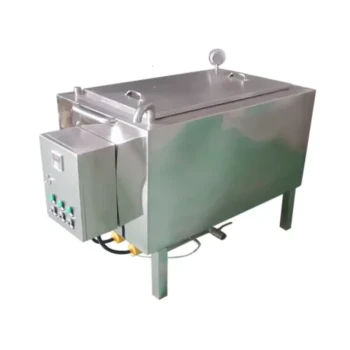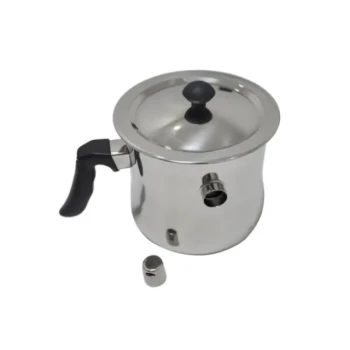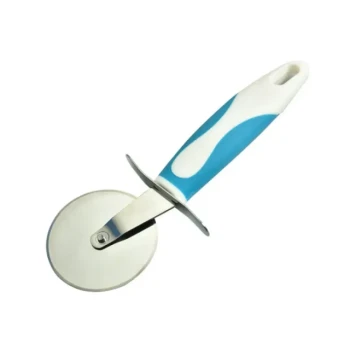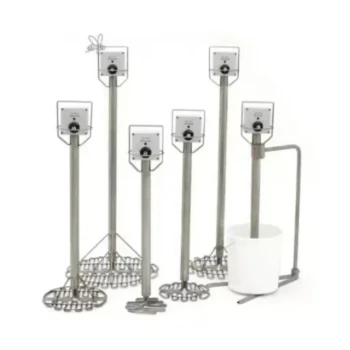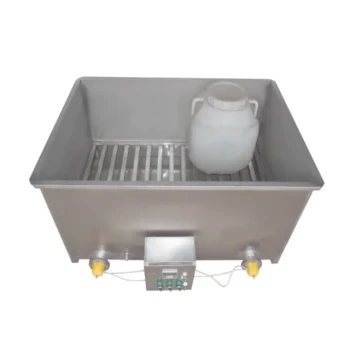At its core, a solar wax melter is a simple, insulated box that uses the sun's energy to melt beeswax. It functions like a small greenhouse, featuring a glass or plastic top to trap heat, which melts old honeycombs placed inside. The liquid wax then drips through a filter into a collection pan, separating it from impurities and leaving you with a clean block of reusable wax.
A solar wax melter is the most sustainable and low-effort method for a beekeeper to render high-quality wax. It leverages the simple power of the sun to perform a slow, gentle melt that preserves wax quality without requiring electricity or fuel.
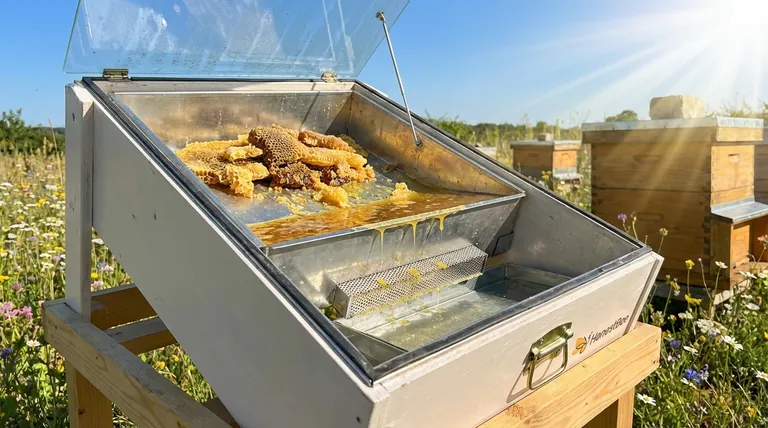
How a Solar Wax Melter Works
The device operates on a straightforward principle: converting sunlight into focused heat. This process happens in three distinct stages, from capturing energy to collecting the final product.
Stage 1: Capturing Solar Heat
A solar melter’s primary component is its clear lid, often made of double-glazed glass or high-strength plastic. This lid allows solar radiation to enter the box but prevents the resulting heat from escaping, creating a powerful greenhouse effect.
Under direct sunlight, the internal temperature can rise significantly, often reaching over 70°C (158°F) and sometimes as high as 120°C (248°F), well above the melting point of beeswax.
Stage 2: Melting and Filtering
Old combs or cappings are placed on an angled tray inside the melter, often made of stainless steel to ensure uniform heat distribution. As the temperature rises, the wax melts and becomes liquid.
This liquid wax flows down the angled tray and passes through a simple filter, such as a screen or piece of cloth. This step is crucial for separating the pure wax from debris, cocoons, and other hive residue, often called "slumgum."
Stage 3: Collection and Solidification
The filtered, liquid wax drips into a collection pan at the bottom of the melter. This pan often contains a small amount of water.
As the wax cools, it solidifies on top of the water, forming a clean, pure block. The remaining impurities either get caught in the filter or sink to the bottom of the water, making the final wax puck easy to remove.
The Key Advantages of Going Solar
Using a solar wax melter is a popular choice, especially among hobbyists and small-scale beekeepers, for several compelling reasons.
Environmentally Friendly and Cost-Free
The most obvious benefit is its sustainability. The melter requires zero electricity or fuel, relying entirely on a free, renewable resource. This eliminates operational costs and reduces your carbon footprint.
Produces Superior Quality Wax
Unlike faster methods that can scorch or darken the wax, the solar melter provides a slow and controlled heat. This gentle process results in a beautifully clean, light-colored wax that retains its natural aroma.
Low Effort and Maintenance
The process is incredibly simple. You load the combs, position the melter in the sun, and let nature do the work. There are no complex parts to manage or settings to adjust, making it very low maintenance.
Versatile and Beginner-Friendly
Its simple design makes it perfect for those new to beekeeping. Models are available in various sizes, and many designs can accommodate frames from different hive systems, offering excellent flexibility.
Understanding the Trade-offs
While highly effective, the solar wax melter is not without its limitations. Understanding these trade-offs is key to determining if it's the right tool for your needs.
Complete Dependence on the Sun
The primary drawback is its reliance on weather. The melter is only effective on hot, sunny days. It will not work on cloudy days, in the winter, or in climates with limited strong sunlight, making it a seasonal tool for many.
Slower Processing Speed
This is not a high-speed system. Processing a full load can take several hours or an entire afternoon. For large-scale commercial operations needing to render hundreds of pounds of wax quickly, a solar melter is often too slow.
Making the Right Choice for Your Goal
- If your primary focus is sustainability and zero cost: The solar wax melter is the undisputed best choice, running entirely on free energy from the sun.
- If you are a hobbyist or small-scale beekeeper: Its simplicity, low effort, and ability to produce high-quality wax from small batches make it an ideal tool.
- If your primary focus is speed and high-volume processing: You should consider an electric or steam-based melter that can operate on demand regardless of the weather.
Ultimately, the solar wax melter empowers you to transform a hive byproduct into a valuable resource using nothing more than the power of the sun.
Summary Table:
| Feature | Benefit |
|---|---|
| Solar-Powered | Zero electricity or fuel costs; eco-friendly. |
| Slow, Gentle Heat | Produces clean, light-colored, high-quality wax. |
| Simple Operation | Low maintenance and effort; just load and let the sun work. |
| Weather Dependent | Requires hot, sunny days; slower processing speed. |
Upgrade Your Beekeeping Operation with HONESTBEE
As a commercial apiary or beekeeping equipment distributor, you need reliable, high-volume solutions. While a solar melter is perfect for small-scale sustainability, HONESTBEE supplies the durable, commercial-grade equipment you need to scale your productivity. From high-capacity wax melters to essential hive tools, we support your business with wholesale-focused excellence.
Let's discuss your specific needs. Contact our team today to explore our product catalog and wholesale opportunities.
Visual Guide

Related Products
- Solar Beeswax Melter Easy Solar Wax Melter for Beeswax
- Electric Commercial Beeswax Melter for Factory Use
- Steam Beeswax Melter Wax Warmer for Wax Processing
- Beeswax Melter for Candle Making Honey Bee Wax Melter
- Electric Honey Press Machine for Squeezing Honey Comb Press Equipment
People Also Ask
- How does the solar wax extraction method work? Reclaim Pure Beeswax with Sun Power
- How does a solar wax melter work? Harness the Sun to Reclaim Pure Beeswax
- What are the main advantages of the solar waxing machine? Harness the Sun for Pure, Cost-Free Beeswax
- What are the main features of a solar wax melter? A Complete Guide to Sustainable Wax Rendering
- Can the Solar Wax Melter operate on partly cloudy days? Harness Solar Power Effectively

